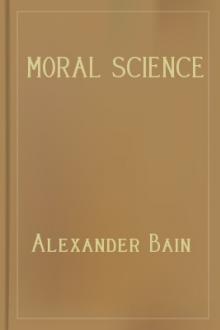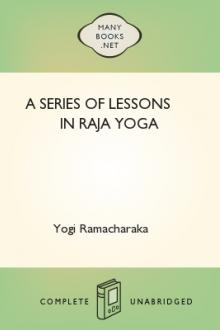Man's Fate and God's Choice, Bhimeswara Challa [best free ereader .TXT] 📗

- Author: Bhimeswara Challa
Book online «Man's Fate and God's Choice, Bhimeswara Challa [best free ereader .TXT] 📗». Author Bhimeswara Challa
The human species must evolve into a species that is in harmony, not in hate, and walk with compassion as its companion; only then will the illusion of separateness yield to Brotherhood and Oneness. The Book of Golden Precepts says, “Behold, there is the goal of beatitude and there the long road of suffering. Thou must choose the one or the other across the cycles to come.”461 The Buddhist Dhammapada says, “You shall wander in the darkness and see not till you have found the eternal light.”462 Struggle we might with all our feeble
457 George Orwell. Nineteen Eighty-Four. 1961. Penguin Publishers. USA. p.249.
458 Scientific American. USA. January 2005. p.22.
459 Avatar Meher Baba. Way to Spiritual Wisdom Through Heart. The Times of India. Hyderabad, India. 10 July 2007.
460 Avatar Meher Baba. Way to Spiritual Wisdom Through Heart. The Times of India. Hyderabad, India. 10 July 2007.
461 Cited in: The Eternal Wisdom: Central Sayings of Great Sages of All Times. 1993. Sri Aurobindo Ashram Publications. Pondicherry, India. p.429.
462 Cited in: The Eternal Wisdom: Central Sayings of Great Sages of All Times. 1993. Sri Aurobindo Ashram Publications. Pondicherry, India. p.430.
strength, we will remain wandering in the dim forest of darkness unless we restore the right balance between head and heart in the human consciousness. We ceaselessly talk of one world and one humanity, but in reality everyone lives in a mental world of one’s own.
Humanity may be six plus billion, but for most people, for all practical purposes, it is at best a hundred, the people one ‘knows’; the rest is a demographic statistic, the less the better.
Human growth in numbers is considered a serious threat to the earth’s carrying capacity. In less than a hundred years, the number of humans on earth is expected to touch ten billion. But the irony that escapes many is this — the ‘large’ number of humans that constitutes that threat on earth is still far less than that of any other species. When the numbers of any other species, be it a tiger or a python or an insect, go down dramatically, we call them ‘endangered species’, a cause for concern. Many of the world’s problems are ascribed to overpopulation. In other words, on a global scale, we want to increase the tiger population and decrease the human population. We prefer a man-eater to man — maybe not without good reason — and for the good of the world! Normally, we try to increase the numbers of those who are the strongest and the smartest. What we are trying to do with our own kind is just the opposite.
Perhaps the greatest indictment of human ingenuity is that we have not found a way to make human presence on earth positive and enriching, or a way to harness human energy and power for human good and for planetary enrichment. No one has ever told us the basis for the ‘optimum human population’, the ‘desirable’ human numbers for the continuance of life on earth, or the unit for such determination. Low productivity and human rapacity for resources should be of equal, if not greater, concern. It is human behavior that is the bigger problem; not human population growth. It is the human ‘way of life’ that causes havoc; not how many humans ‘live’ on earth at any given time. Even if the human population is frozen or gets reduced, none of the problems man is facing are likely to disappear; we will become more brazen, greedier, and even more consumptive. It is human ‘civilization’ that is the problem.
Behind civilization is the mind. Nature has a built-in, self-correcting mechanism, including a way of controlling how many of which species should inhabit the earth at any point. Predator and prey coexist without either becoming extinct, or when a new species arises. Nothing is an accident in Nature; not ‘natural disasters’, and not even the ‘human population explosion.’ Nature has its own number for the numbers of all forms of life, and it will, in its own way, take care of the balance and the earth’s carrying capacity. Perhaps, we are doing Nature’s work by killing each other for so many reasons that we will soon run out of reasons that will not lead to such killing.
Whether it is a the ‘population problem’ or climate change, or galloping moral decadence or even growing indifference, intolerance and insensitivity, they all stem from the same source — the world within; the vortex in which our thoughts arise, incubate, mature, mutate, and burst out as behavior. Judging by the nature and character of our behavior, something is seriously and terribly amiss inside. The process or processes that entail information gathering, discriminatory analysis, decision making and prioritization must be transformed. It is at that level and depth of dimension that we must induce and channel change, a change that has never been attempted before since the advent of man on earth. For there has developed a serious imbalance within the rubrics of intelligence and energy that come to play when thoughts, feelings, passions, and emotions fight for mastery of our ‘conscious’ and ‘subconscious’ consciousness. The war is within; the battleground is consciousness. The antagonists are mind and heart. It is a war that must be waged, but it is a war that must have neither a victor nor a vanquished. What we need is both a détente and a entente, a structure of sharing that allows each of us to play cooperative and complementary roles in shaping our thoughts, and in what we say and do.
Chapter 6
Contours of Consciousness Change
Consciousness — all there is
All our lives we think and talk of ‘my’ life, ‘my’ body, ‘my’ thoughts, ‘my’ feelings, ‘my’ pain , ‘my’ sorrow, ‘my’ destiny, and so on. So, what is this mysterious me or mine that makes us what we are, distinct from any other, or feel in a manner that is particular only to ourselves? And what makes us different from an ant, or for that matter, a plant or a tree? We come face to face with these questions after exhausting ourselves with a multitude of metaphors and an avalanche of analyses. Perhaps the questions become easier to answer if phrased differently: What is it that separates humans of one yuga or age from those of another time, or an infant from an adolescent and the young from an adult? What is it that we need to change, without changing which nothing else is worth changing, to behave differently? What is it that we need to connect to, to attain the goal of universal brotherhood or the kingdom of God on earth? The answer, unquestionably, is Consciousness — the mystery of mysteries, the enigma of all riddles, the final frontier of all human struggle and seeking. Its ambit embraces a variety of fields of human knowledge, such as religion, mysticism, theosophy, occultism, science, psychology, etc. Anything that we are aware of at a given moment forms part of our consciousness, but we are not ‘conscious’ of it, which makes conscious experience at once the most familiar and most mysterious aspect of our lives. Long the focus of esoteric thought and of intellectual inquiry, the study of consciousness has, over the past century, acquired added relevance and respectability as man struggles to build a ‘bridge’ to the future. Millions of people across cultures and continents, perhaps for the first time in their lives, are beginning to realize how much they have been let down and deceived by the various institutions and ideas they have long cherished as sacred, and that for any decisive change in the world, there should be no safe havens or ‘sacred cows’. Parallel to that disquiet there is also simmering optimism, a deeply felt gut- feeling in many thoughtful people that, although we are wholly unaware, there are forces at work in our seemingly rotten world that are pushing us towards a new dawn. In New Age circles, there is considerable talk of a new — and final — level of consciousness that is said to be pervading the planet, as a prelude to a radically altered state of the human condition. In the words of David Wilcock, researcher of ancient civilizations and consciousness science “humanity is on the verge of a near-spontaneous metamorphosis into a more highly evolved state of consciousness”463. This ‘shift in human consciousness’, it is believed, leads up to the year 2012 which would trigger a “discontinuous mega-event where 'time and space collapse”464. Whether or not this prophecy too is fated to be yet another failed one, hyperbole or an imminent happening, there is little doubt that something at the very core of human condition, at a depth deeper than we can discern, is changing. And
463 David Wilcock. The Energetic Engine of Evolution. In: The Reincarnation of Edgar Cayce? Interdimensional Communication & Global Transformation [Wynn Free, David Wilcock]. 2004. Frog Books. Berkeley, California, USA. p.337.
464 David Wilcock. The Ultimate Secret of the Mayan Calendar: an Imploding Cycle of Energy Increase, Culminating in 2010-2013. No Reason to Fear the Changes. Accessed at: http://divinecosmos.com/index.php?option=com_content&task=view&id=45&Itemid=30
the effect is both positive and negative. The negative is all too vivid and visible — bloodcurdling cruelty, mindless massacres, unspeakable crimes for lust, wealth and power. It seems as though we wait daily, if not eagerly at least compliantly, to read or hear far more macabre ‘news’ to ‘entertain’ ourselves. Less visible but potentially positive is the appearance of stunningly gifted children in unprecedented numbers across the world, the emergence of innovative and integrated holistic modalities, people becoming less “religious” and more “spiritual,” and the dawning of new communities and social structures based on partnership principles. Whichever scenario seems more plausible, it must have some bearing on our consciousness. While the spotlight is on a plethora of crises — economic, ecological, ethnic, political, moral, religious — the real crisis is the one of consciousness. We often read and hear abour corruption in public life, corporate corruption, and so on, but but the real ‘corruption’ is the insidious corruption of the consciousness. Unless we address this issue, no problem that human society is now grappling with can be seriously addressed. The fact is that human consciousness must change, for man to go anywhere other than over the ‘edge of the brink’. Albert Einstein, with his uncommon ability to go to the heart of any issue, said that “No problem can be solved from the same level of consciousness that created it”465
For all change is a change in the level or states of consciousness. Whatever any man has ever accomplished has entailed raising the consciousness to a different level. Whatever atrocity anyone has committed was possible only because something in his consciousness went awry. In both cases, ‘consciousness’ includes the conscious, subconscious, and the superconscious. Not only is there no unanimity, among psychologists or even the scriptures, about what constitutes consciousness, but there is no unanimity either about how many levels of consciousness there are. However, what psychologists call an ‘altered level of consciousness’, is dhyana or samadhi, for the Hindus; nirvana, for the Buddhists; fana, for the Sufis; pneuma, for the Christians; and kensho or satori, for the Zen Buddhists. Consciousness is not only individual and universal; it is the one that at once connects and separates life and death and afterlife, all three of which are, in essence, altered states of consciousness. Although life after death still defies human imagination, there is also growing acceptance in scientific and parapsychology circles that ‘death’ is not wholesale wiping out or total annihilation of all that a sentient, self-conscious, thinking human being is, that some sort of human essence or an element of human personality





Comments (0)